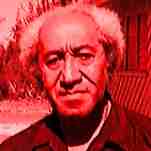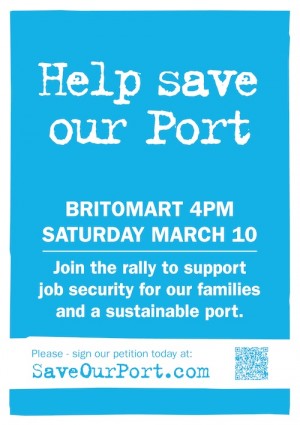Crowding the road
 Steve Braunias called me the other day to explain that he'd just walked down a section of the Great South Road, in the hope of finding inspiration for next month's issue of Metro. After returning from his walk and popping on the internet, Braunias had discovered that Paul Janman and I have been talking about filming a journey down the Great South Road for the last six months or so, and have documented some preliminary forays.
Steve Braunias called me the other day to explain that he'd just walked down a section of the Great South Road, in the hope of finding inspiration for next month's issue of Metro. After returning from his walk and popping on the internet, Braunias had discovered that Paul Janman and I have been talking about filming a journey down the Great South Road for the last six months or so, and have documented some preliminary forays. It is hard to feel proprietorial about an arts project based around a journey down a road, when so many people, both in New Zealand and elsewhere, have written about or painted or filmed their jaunts along country lanes or highways or urban thoroughfares. British writers are famous for taking to the road: William Cobbett's rides through counties torn apart by enclosures and industrialisation in the early nineteenth century, Edward Thomas' walks down tranquil Sussex byways in the years before World War One, and Iain Sinclair's demented orbit of the M 25, London's ring road, in the dying days of Blairism all make irresistable reading.
New Zealand, too, has its tradition of what we might call the road text. John Mulgan's canonised Man Alone describes the wanderings of a glum English immigrant down the roads of a Depression-era New Zealand. Although Man Alone is a novel, its author was a fanatical walker. The literary scholar Rod Orange discovered the extent of Mulgan's researches after he stepped out of his study, put on his boots, and hit the Desert Road and the rough byways of the Kaimanawa Ranges, in an effort to trace the route of the protagonist of Man Alone. After what must have been a good deal of huffing and puffing, Orange found that Mulgan's descriptions of the backblocks and back roads of the central North Island were extraordinarily accurate.
 At about the time Mulgan was beginning Man Alone, a young socialist and feminist named Elsie Locke crossed the Waikato River from her native Waiuku and headed down the paper roads and stock races of the area sometimes known as Limestone Country. In the days it took her to travel south from the Waikato to Raglan harbour, Locke encountered Maori communities still innocent of the English language and the cash economy, as well as vast sheep farms ruined by ragwort, gorse and the global financial crisis. Locke wrote her journey up nearly five decades later in Student at the Gates, an impressionistic account of the miseries and pleasures of life in 1930s New Zealand.
At about the time Mulgan was beginning Man Alone, a young socialist and feminist named Elsie Locke crossed the Waikato River from her native Waiuku and headed down the paper roads and stock races of the area sometimes known as Limestone Country. In the days it took her to travel south from the Waikato to Raglan harbour, Locke encountered Maori communities still innocent of the English language and the cash economy, as well as vast sheep farms ruined by ragwort, gorse and the global financial crisis. Locke wrote her journey up nearly five decades later in Student at the Gates, an impressionistic account of the miseries and pleasures of life in 1930s New Zealand. In the 1960s the octogenarian AH Reed made a series of walks across New Zealand, travelling first from North Cape to the Bluff and then from the western to the eastern extremes of Te Ika a Maui. Reed was a self-advertising, and therefore tedious, ascetic, who spent his nights in a sleeping bag with his head halfway out a window and began his days at six o'clock by loudly chanting Methodist hymns and eating a bowl of cold porridge. Editors at his firm were instructed to purge all the manuscripts they handled of expletives and references to alcohol and gambling.
Reed's prose style was about as exciting as his lifestyle, but he managed to sell thousands of copies of books like From East Cape to Egmont on Foot at Eighty-Six and The Happy Wanderer: a Kiwi on Foot. Perhaps the elderly Reed's odysseys interested New Zealanders for the same reason that Rolling Stones tours interest us in the twenty-first century. Even if Reed saw and did nothing particularly noteworthy on his walks, the sheer fact that he survived them, at his advanced age, may have seemed both commendable and somehow consoling. As he strode down tarred highways, guided by well-wishers to whom he offered hymns and improvised sermons, he may not have faced high water or landslides or loneliness, but he did continually risk a heart attack or stroke.
As Steve Braunias and I swapped stories of our adventures on the Great South Road, I was alarmed to realise that he possesses something of AH Reed's passion for exercise. When Braunias told me that he'd walked, on a single rainy day, from Greenlane all the way to Manurewa, I thought guiltily of the afternoon I recently spent sitting on a couch near a pleasant rural section of the Great South Road, drinking beer with Paul Janman.
Paul had wanted me to travel by Shanks' Pony over the Bombay Hills, visiting on the way the eroding redoubts the British army raised alongside its road to the Waikato, but after we had spotted an old couch sitting under a macrocarpa in a quiet valley I had convinced him that we ought to learn from the casual, blokey aesthetic of trashy television programmes like Sports Cafe, and sit down to have a couple of drinks and improvise a dialogue. The masses were tired, I told Paul, of earnest scholars in cardigans puffing down the camera and pouring out facts and figures: they wanted something less intimidating. I don't think I actually believed my arguments, but that couch looked very comfortable, particularly in comparison to nearby Razorback Redoubt.
As a result of my urgings, the following piece of footage lurches from a leisurely couchside chat to a montage of images made by William Temple, the Victorian Cross winner and incompetent photographer who unwittingly captured some of the unpleasant realities of the 1863-64 war against the Waikato Kingdom:
Anti Travels in the Ararimu Valley from Public Films on Vimeo.
Paul has coupled the photo montage with 'E Pa To Hau', a famous lament composed by a member of Ngati Apakura, a hapu that lived at Rangiaowhia, one of the richest areas of the Waikato Kingdom and the site of what was perhaps the worst massacre of the Waikato War. Near the end of the war, Apakura women and children took refuge in Rangiaowhia's church, only to have it set on fire by advancing Pakeha troops. In a poem written in 1958, when discussion of the the New Zealand Wars was very rare in Pakeha society, Kendrick Smithyman alluded to the market gardening economy booming in the Waikato before the invasion, and linked the slaughter at Rangiaowhia to General Duncan Cameron and Bishop Augustus Selwyn, the military and spiritual commanders of the invaders:Never small mill’s grinding
nor peachgrove’s banding, not the beanvine’s blossom
should any wind’s blow turn or lessen.
None will simple occupation in their least defend
from the irregular cavalrymen descending
to let their soured guiltiness ripen
rot-red in a valley good days abandon.
How is it to fall from your God’s just hands
between clutching at your crop and the quick
stroke your reaper planned? How may these, their brown bodies cured
in unholy smoke, count the kindness you afford
them, Bishop? How, General, are your commands
to read lawful...
Smithyman's text has, for me, the same tone of majestic sadness as 'E Pa To Hau'.
Like the highways and byways the likes of Cobbett and Thomas travelled down, the Great South Road has run through many thousands of lives, and been the scene of or backdrop to thousands of stories. The Great South Road was built to help prosecute a war, but it has also been the route for wedding processions. It is a site for deadly crashes, and for boozy street parties. Anybody who records a journey down such a road has to find a way of coping with the incongruity of the different parts of its history.
As I watch Paul's clip, I am troubled by the transition from our jocular exchanges on a roadside couch to the menacing photos of William Temple and the lament of Ngati Apakura. I don't like the idea of creating a relentlessly bleak, determinedly humourless account of the Great South Road's history, but I'm not sure about the notion of prefacing William Temple with laughter and beer drinking, either. Perhaps Steve Braunias' piece for April's Metro will hint at an effective way of treating the complex and contradictory history of the road I grew up beside.
Twenty Steps Down the Great South Road from Public Films on Vimeo.
[Posted by Maps/Scott]
























